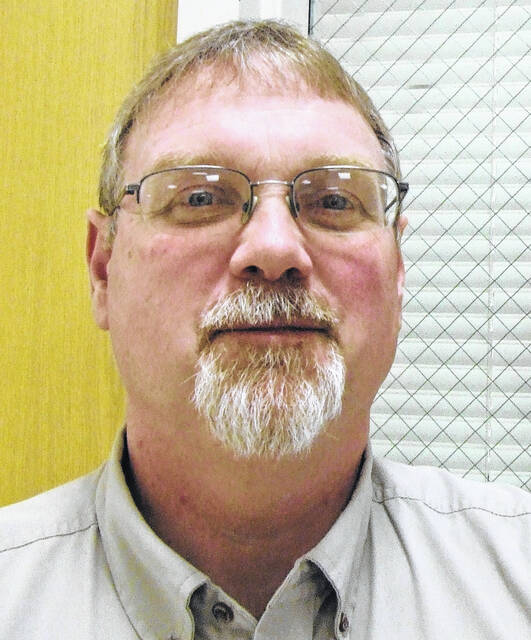
Brrrr! Baby it’s cold outside again. Don’t worry, it’s Ohio weather — it will change again and again and again.
In the meantime, consider an upcoming Farm Office Live, which provides the latest outlook and updates on ag law, farm management, ag economics, farm business analysis and other issues dealt with in your farm office.
Targeted to farmers and agri-business stakeholders, our specialists digest the latest news and information and present it in an easy-to-understand webinar format.
The next Farm Office Live is scheduled for: Wednesday, March 16 at 7 p.m.; or Friday, March 18 at 10 a.m. — where the Farm Office Team will provide the latest economic and legal information for Ohio agriculture. Register at go.osu.edu/farmofficelive .
Pasture damage
Since we started the column with a weather comment, I thought it important to consider thinking about and assessing Mother Nature’s abuse this winter to our pastures. Many pastures across Ohio will need some management to get these areas back into productive forage production.
In the most recent Ohio State University Beef newsletter, Stan Smith of the Fairfield County Extension office shared some options to consider when looking to repair and renovate pastures and forage stands.
One low-cost option is to do nothing. In the absence of competition from existing plants, given enough time nature will re-grow something in paddocks that were trampled while muddy.
The cost in this option is time. If you have the land base to set aside those torn up paddocks through the spring and early summer, they will renovate themselves.
Dragging these areas with a harrow once they dry a bit will level off the high spots, but beyond that we generally have plenty of seed bank in the soil that will eventually regenerate vegetation.
Whether that seed bank contains desirable plants, or what percentage of desirable plants will make-up the re-growth are questions to be considered.
It’s likely in those paddocks where the sod base was torn up that summer annual weeds like pigweed, ragweed, barnyard grass and goose grass will show up in heavy numbers in addition to the grasses and clovers present in the sod base.
Clipping annual weeds off before they go to seed will allow more light into the grasses and clovers that are coming back.
By mid to late summer a light grazing pass could be made on these paddocks. If they are not torn up again next winter, the sod base – especially if it was previously fescue – will continue to thicken and good rotational grazing management can put them back into productive pasture paddocks the following year.
The main question that must be answered in this option is: Do you have the time and pastureland base to be able to wait for the paddock to heal itself and perhaps lose an entire grazing season of productivity?
The next option to consider is re-seeding. This offers the possibility to increase pasture productivity and to bring a new mix of forages into the pasture paddock. If looking to re-seed, consider new and improved plant genetics to improve stand, productivity, grazing tolerance, and palatability.
A severely damaged paddock that has suffered from trampling and reduced stands may be an opportunity to bring some new and improved forage genetics into the pasture mix.
Talk with your seed representative or County Extension Agriculture Educator about a pasture mix of specific species that might work best for your situation.
Another thought to contemplate relates to applying nitrogen to grass forages.
With today’s costs of nitrogen all producers should aim for 30% stand of evenly distributed legumes throughout a grass stand. At this level, supplemental nitrogen should not be needed in future years.
If the area to be planted needs to be covered quickly due to erosion concerns and/or quicker production is needed for grazing, then include some annual ryegrass seed in the seeding mixture.
Adding around 4 pounds of annual ryegrass per acre should provide some early cover and an early grazing pass because it is quick to germinate and grow.
Smith suggests if the choice is made to do a new seeding, this is also an ideal time to consider making any necessary adjustments to fertility. This obviously begins with a soil test.
Soil pH should be above 6.0, with a goal of 6.5. Soil phosphorus (P) level should be 30 to 50 ppm when using the Mehlich III soil test extraction. Given an average Ohio cation exchange capacity (C.E.C.) of 10, soil potassium (K) level should be at least 120 ppm.
If your soil tests are reported in pounds per acre instead of ppm, then these numbers should be doubled, respectively.
If your soil is not close to these numbers, it may be worthwhile to put off a spring seeding, apply the needed lime and fertilizer this spring, spend time controlling the weeds that will emerge and aim for an August seeding.
In those paddocks that are severely torn up, it offers the rare opportunity in a pasture situation to spread lime and/or fertilizer and then use tillage to incorporate it into the root zone while smoothing out the soil surface and preparing a new seed bed.
Finally, the specific option chosen depends upon the resource base of the producer, farm forage goals, and timing.
Regardless of the option used, planning, management and cooperation from Mother Nature are necessary to achieve success.
Tony Nye is the state coordinator for the Ohio State University Extension Small Farm Program and has been an OSU Extension Educator for agriculture and natural resources for over 30 years, currently serving Clinton County and the Miami Valley EERA.


